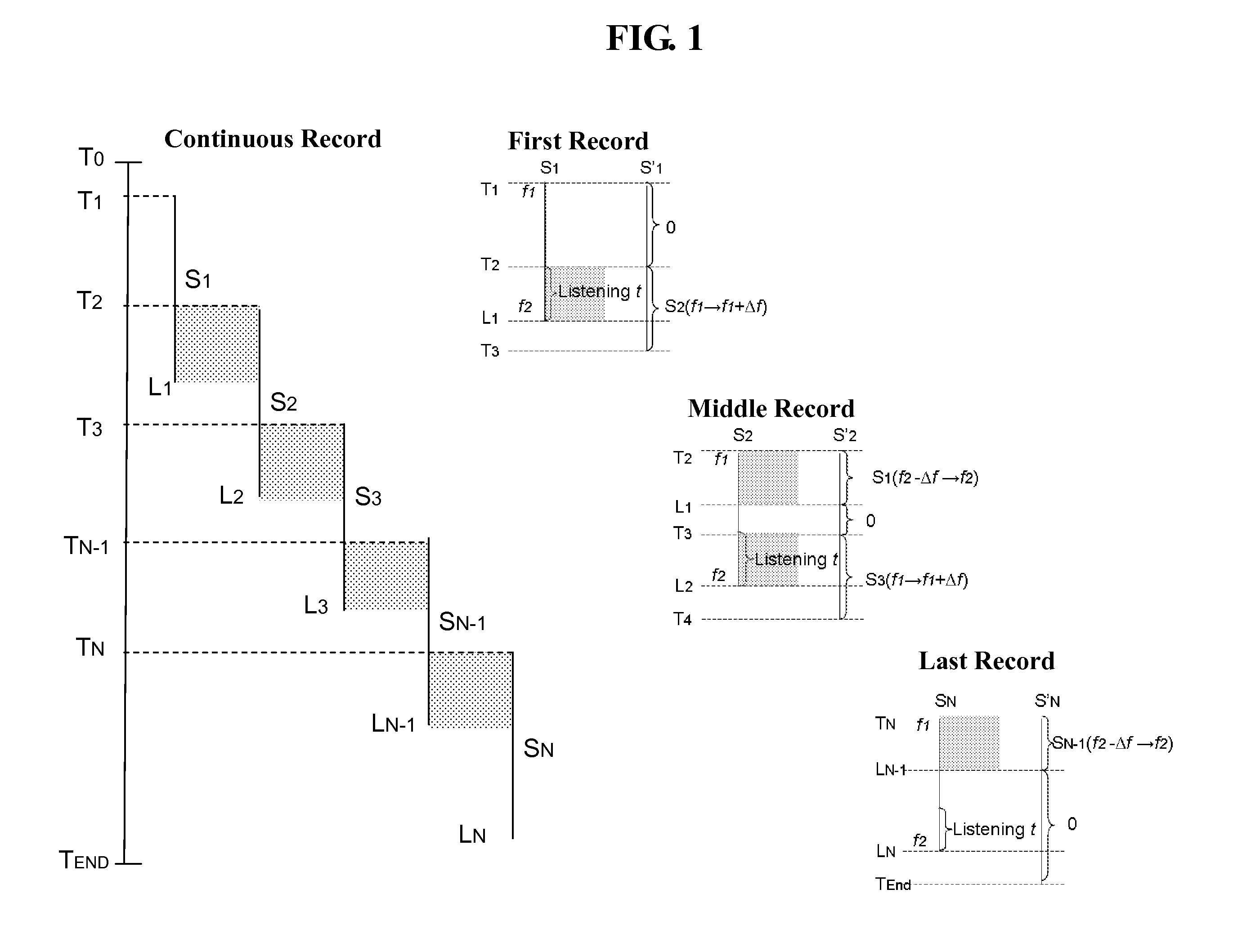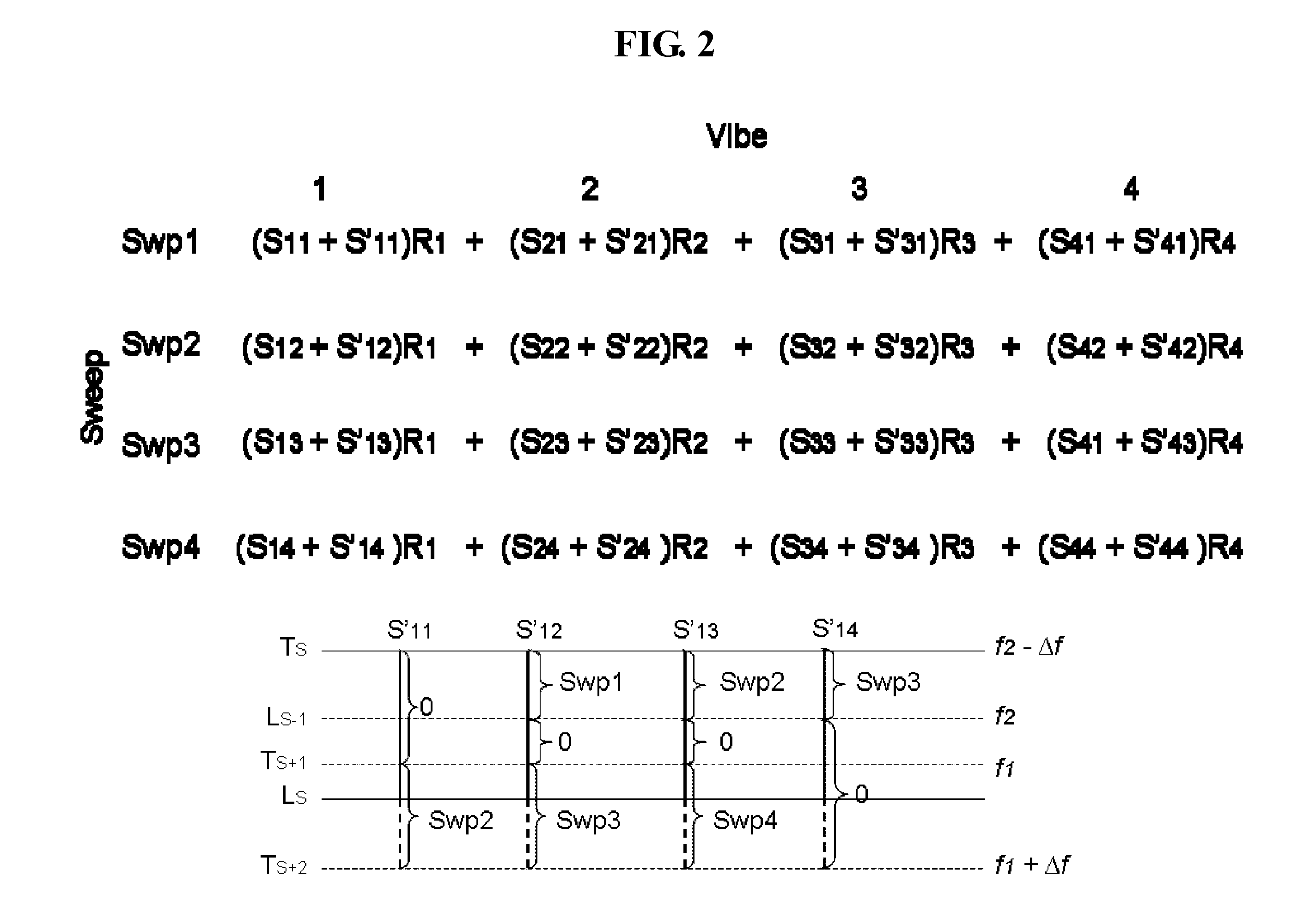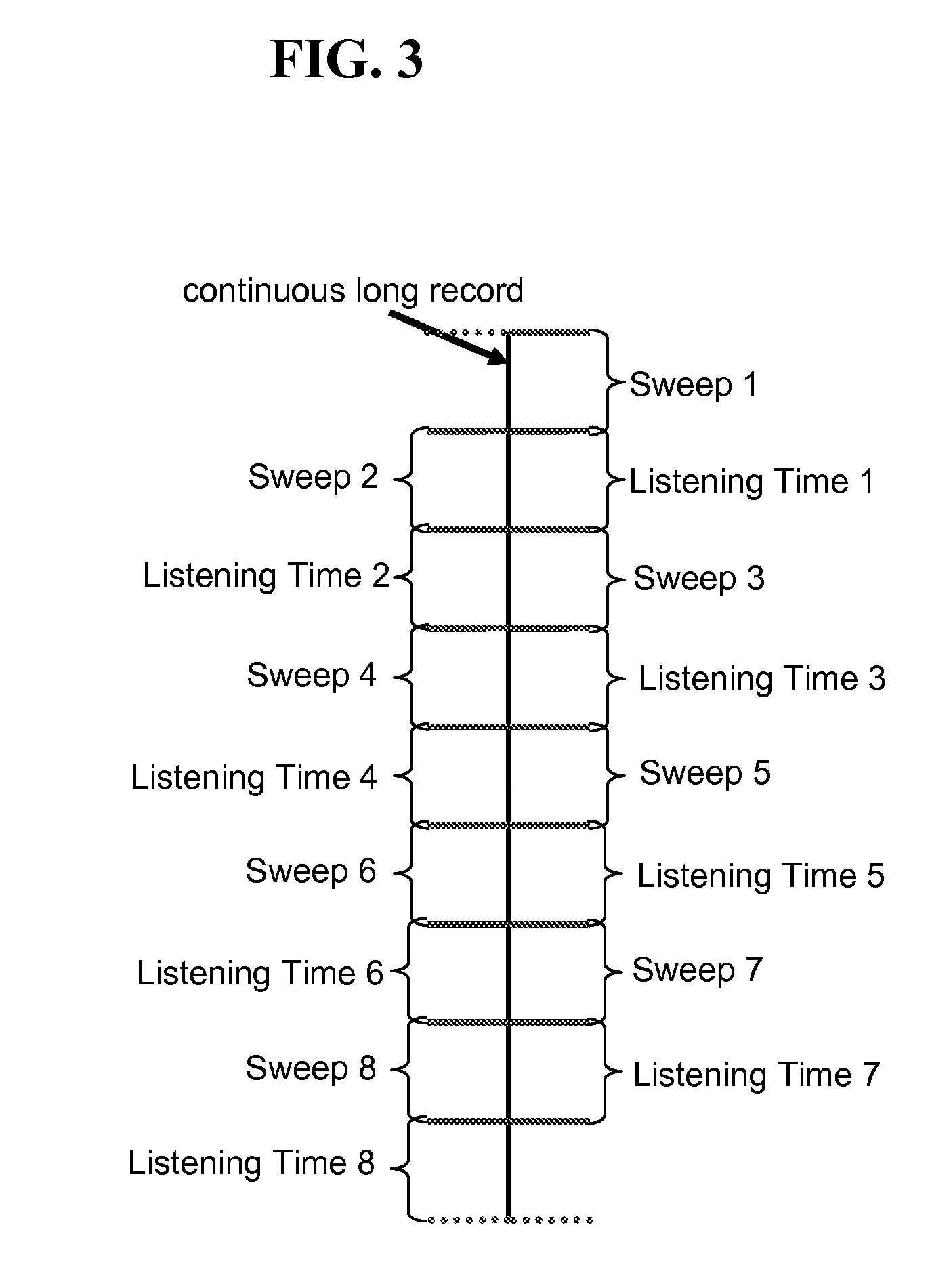Extraction of discrete records from continuous seismic recordings
a technology of seismic recording and discrete records, applied in seismicology, instruments, measurement devices, etc., can solve problems such as distortion of signals and errors in the correlation of conventional data, and achieve the effects of reducing harmonic distortion, reducing overlap, and reducing nois
- Summary
- Abstract
- Description
- Claims
- Application Information
AI Technical Summary
Benefits of technology
Problems solved by technology
Method used
Image
Examples
example 1
Selective Signal Separation
[0023]In one embodiment, signals are separated for each source point at the time of discrete record extraction. As shown in FIG. 2, for each sweep there is a signal separation function (S′) that removes interfering signal noise originating from the previous sweep data and subsequent sweep data. Any given sweep will have a start time (TS) and an end time (TS+1) at which point listening time begins. The listening time terminates at any time if the previous and subsequent sweep signals are removed through selective signal separation. For any record the beginning overlap and end overlap can be removed by using inversion to estimate reflectivity (Ri) for the desired data and the overlapping sweeps at a given frequency.
[0024]In one example using a high to low sweep, the overlap at the beginning of the record and the end of the record interfere with the desired signal (FIG. 1). By providing an appropriate timeline for when interfering signals were present, the in...
example 2
Single Continuous Record
[0027]Using selective signal separation, a single continuous record can be generated where one seismic source, including one or more seismic signal generators, is to operate continuously without listening time. As shown in FIG. 3, the sweep signal is initiated at the green bar and completed at the red bar. Traditional sweep methods would require a substantial listening time after the signal is generated. This provides a listening time that can, in certain circumstances, be up to the same length as the sweep time. Selective signal separation allows removal of the interfering signal, in the case of sweep 1, the beginning of sweep 2 would be the interfering signal. Thus a seismic survey that requires 4, 5, 6, 7, 8, 9, 10 repeats or more to obtain sufficient resolution would require repeated sweeps followed by a significant listening time. With this method of adaptive inversion, sweep 1, sweep 2, sweep 3, sweep 4, sweep 5, sweep 6, sweep 7, sweep 8, and any numbe...
PUM
 Login to View More
Login to View More Abstract
Description
Claims
Application Information
 Login to View More
Login to View More - R&D
- Intellectual Property
- Life Sciences
- Materials
- Tech Scout
- Unparalleled Data Quality
- Higher Quality Content
- 60% Fewer Hallucinations
Browse by: Latest US Patents, China's latest patents, Technical Efficacy Thesaurus, Application Domain, Technology Topic, Popular Technical Reports.
© 2025 PatSnap. All rights reserved.Legal|Privacy policy|Modern Slavery Act Transparency Statement|Sitemap|About US| Contact US: help@patsnap.com



